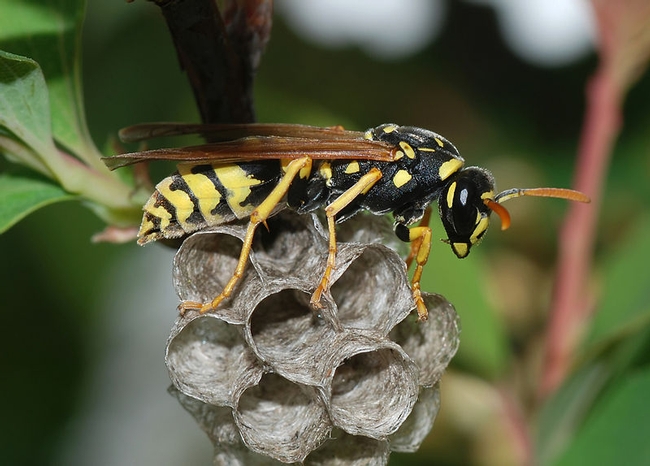From the UC Blogosphere...
Invasive paper wasp responsible for increasing yellow jacket complaints
The European paper wasp is spreading quickly across Northern California and boosting yellow jacket complaints, reported Peter Fimrite in the San Francisco Chronicle.
"The European paper wasp, which is about the same size (as the yellow jacket) but more slender, has built up to enormous numbers in some communities," said Lynn Kimsey, professor in the Department of Entomology at UC Davis. "They have been making their way out of the Sacramento area for the past 20 years."
Kimsey said the wasps have moved outward from Sacramento along river beds and water ways into the Sierra Nevada and along the delta toward San Francisco. In August, 345 wasp nests were removed in South Lake Tahoe.
European paper wasps dine on caterpillars, aphids and honeybees, but switch to mostly carbohydrates in the late summer for energy, said Andrew Sutherland, UC Cooperative Extension advisor in the Bay Area.
Vernard Lewis, UCCE specialist in the Department of Environmental Science, Policy and Management at UC Berkeley, also contributed to the story.
"Where I normally eat my lunch is one of the biggest yellow jacket nests I've seen in years," Lewis said. "It's not just here. I'm getting reports from the Berkeley campus and from Richmond, Antioch and Rodeo. Something is up. It's not just yellow jackets. It's other pests, too, like cockroaches. It's the most I've seen in at least 10 or 15 years."
Fimrite added a link in his article to the UC Statewide IPM Program Pest Note on Yellowjackets and other social wasps.
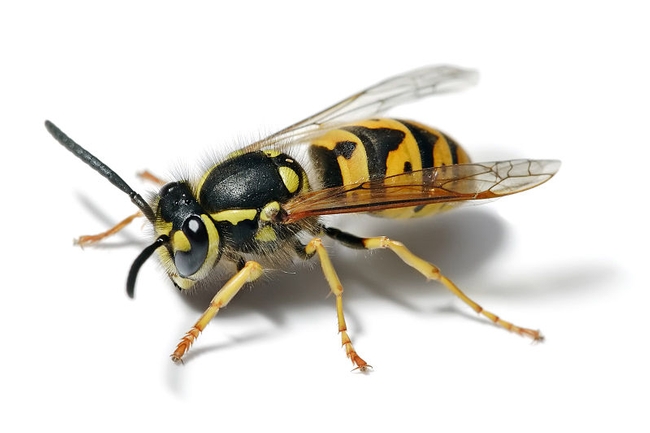
Yellow jackets, like the one above, are often confused with European paper wasps. (Photo: Wikimedia Commons)
DPR Approves Special Local Need for Brigade for Fuller Rose Beetle
DPR issued a special local need effective September 9, 2013 that allows the use of Brigade WSB on citrus trunks at the 5 lb product (0.5 lb ai/acre) rate for Fuller rose beetle. The SLN allows two treatments of 5 lbs applied 12-16 weeks apart OR four treatments of 2.5 lbs applied 6-8 weeks apart. The SLN allows the use of either a hand wand sprayer or shielded sprayer to apply the treatment to the lower 18 inches of skirt-pruned tree trunks. This SLN provides a higher rate and an additional method of application - which should improve control of Fuller rose beetle. Dr. Joseph Morse and Dr. Beth Grafton-Cardwell are conducting field trials to determine the best combination of treatments (skirt pruning, trunk treatments, foliar treatments) to prevent Fuller rose beetle from laying eggs under the calyx of fruit. Korea is allowing Methyl Bromide fumigation this year, but is definitely not allowing it next year. So it is important to continue to treat for Fuller rose beetle this season to drive the beetle populations down and make control easier next year.
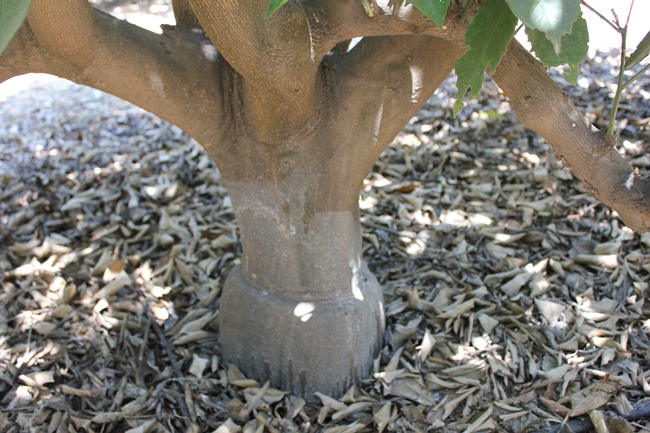
Brigade treated citrus trunk
Use of technology in agriculture continues to grow
Researchers are developing new technological advances that farmers and ranchers can use to become more efficient and sustainable even as the farm labor force is shrinking, reported Stacy Finz in the San Francisco Chronicle.
The story quoted Ted Batkin, the former president of the Citrus Research Board who served as a panelist at the University of California's Global Food Forum last spring. He said a robot currently under development could be used to pick citrus, apples, pears, peaches and other stone fruit.
"It's a game changer," he said. "We'll no longer be dependent on human labor for harvesting."
The story also delved into drone technology, which a professor at UC Davis believes may be employed for agricultural production needs ranging from herding cattle to spraying chemicals.
"Anything that's boring, repetitive and dangerous: Get a drone," said Ken Giles, professor in the Department of Biological and Agricultural Engineering at UC Davis.
Shrinivasa Upadhyaya, another UC Davis engineering professor, and Bruce Lampinen, UC Cooperative Extension specialist in the Department of Plant Sciences at UC Davis, are working on a light bar sensor that measures how much light energy is absorbed by plants, providing farmers with a guide for pruning orchards, which is normally labor intensive. They are also developing leaf monitor sensors that report plant water status. These sensors can be monitored through the internet to make irrigation management decisions.
"Now no one needs to go to the field," he said. "You get the data every five minutes on your laptop."
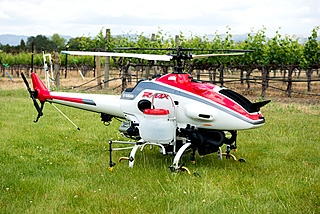
Scientists believe drones like this helicopter sprayer may one day be used to reduce labor needs in agricultural production. (Photo: UC Davis)
To Bee or Not to Bee--a Photographer
To bee or not to bee--a photographer. Capturing images of honey bees is a delightful leisure activity. You don't have to...
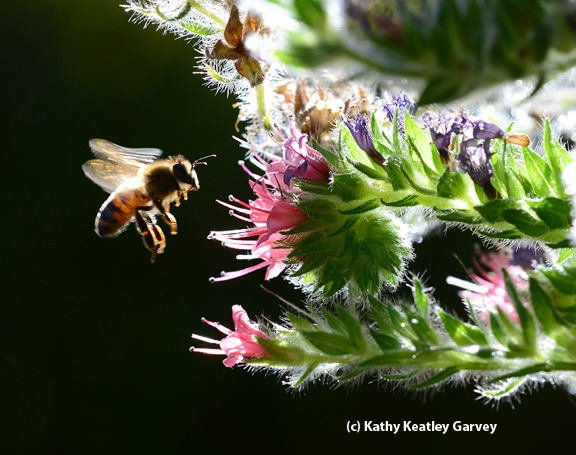
Backlit honey bee heading toward tower of jewels in the early morning. (Photo by Kathy Keatley Garvey)
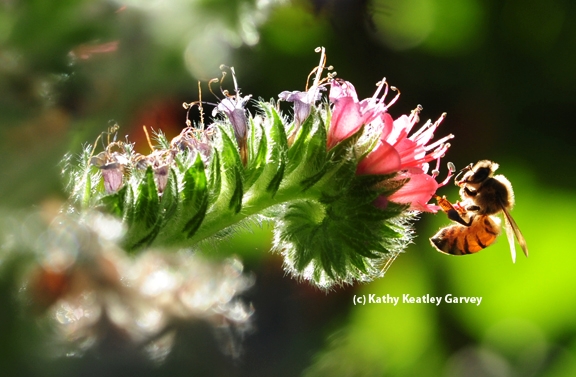
The glow of a honey bee in the early morning light. (Photo by Kathy Keatley Garvey)
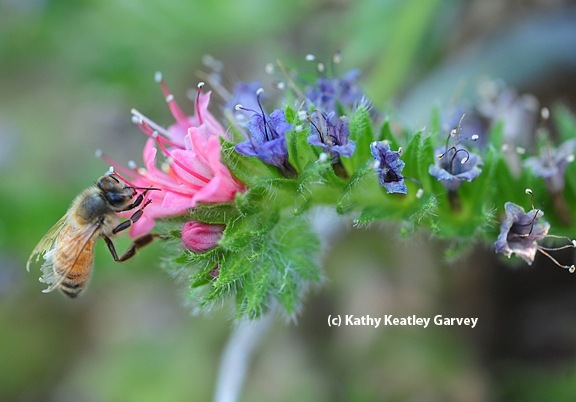
Pastel colors, almost like a watercolor. (Photo by Kathy Keatley Garvey)
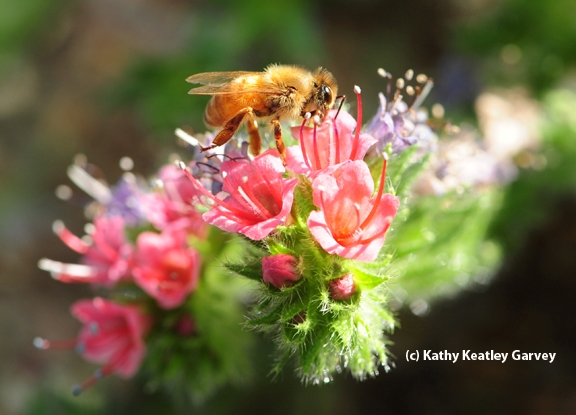
Morning light shining on honey bee. (Photo by Kathy Keatley Garvey)
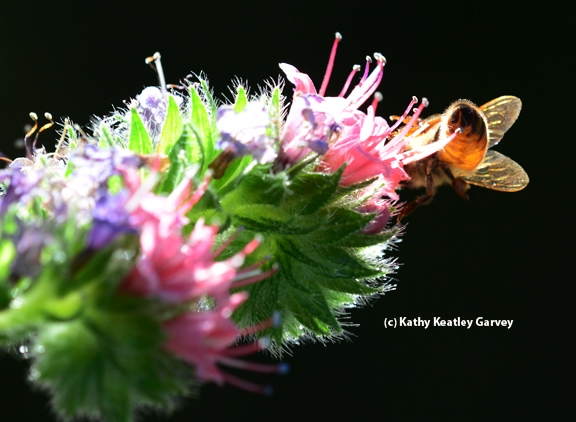
This is the end. (Photo by Kathy Keatley Garvey)
Passionate About the Passionflower Vines
Valley carpenter bees are passionate about passionflower vines (Passiflora). You see these black bees foraging on the...
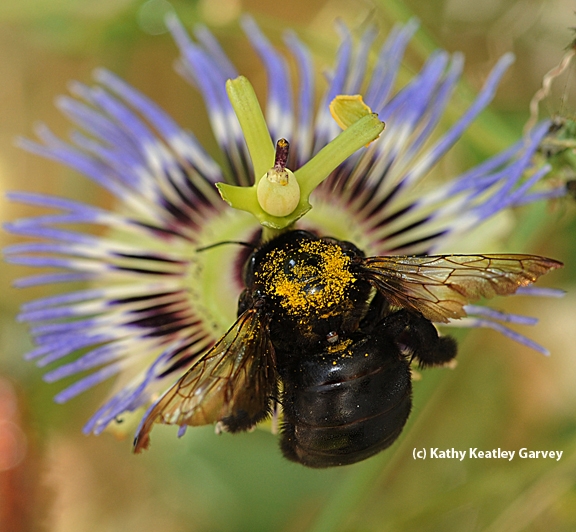
A female Valley carpenter bee is covered with yellow pollen. (Photo by Kathy Keatley Garvey)
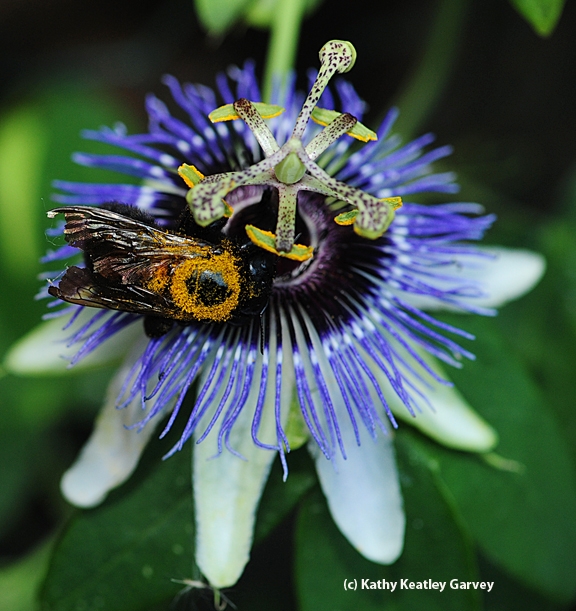
Female Valley carpenter bee on a passionflower blossom. (Photo by Kathy Keatley Garvey)



